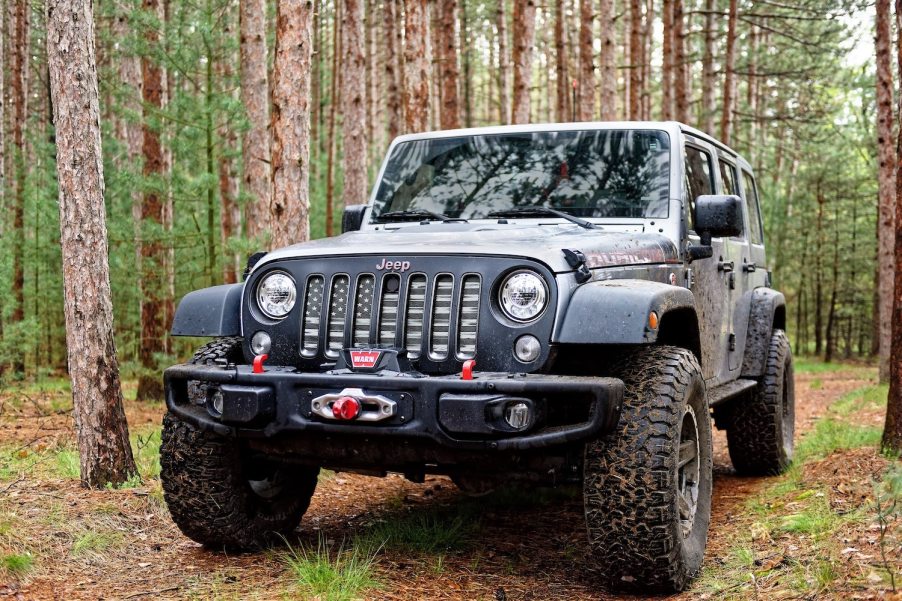
Does a Jeep Wrangler JL Make a Good Daily Driver?
A brand-new Jeep Wrangler handles highway driving much better than previous generations of the iconic SUV. That said, the Wrangler is far from the most comfortable or most efficient highway cruiser. Whether or not daily driving a Jeep Wrangler is a good idea depends entirely on your priorities and your daily drive.
Is the Jeep Wrangler comfortable on the highway?
When Doug DeMuro first drove the latest Jeep Wrangler generation (2018-present) he was impressed. He said that on the highway it “drives like a regular SUV,” naming the Pathfinder and Pilot as comparisons. Despite this improved handling, the Wrangler is still loud at high speeds.

The Jeep Wrangler’s layout is old school, to say the least. Since World War II, Jeep SUVs have had heavy-duty ladder-frame construction, part-time 4WD, and a solid front axle. This layout makes them capable and durable off-road, but ill-suited for on-road driving.
The perennially popular Jeep Wrangler earned a reputation for excessive wind noise, hit-or-miss fuel mileage, and a high-speed vibration often called the “death wobble.” So imagine critics’ surprise when Jeep rolled out the 2018 Wrangler “JL” and it was stable on the highway, with a range of more efficient powerplants.
DeMuro pointed out that to achieve smoother handling from a new generation of a car, “you have to widen it and lower it.” What’s impressive about the latest highway-ready Wrangler is that its dimensions are identical to the outgoing model. But with this blocky body style, there is little Jeep engineers could do to reduce wind noise at high speeds.
Is the Wrangler fuel efficient?
The Jeep Wrangler is a large, heavy SUV and certainly not engineered for fuel-efficiency. Because of the Wrangler’s boxy shape, some Jeep owners have found their actual highway fuel mileage varies greatly (14-23 mpg based on wind speed).

When MotorTrend conducted a long-term test with the new “JL” generation of the Jeep Wrangler, the publication found the SUV’s fuel efficiency inconsistent. What was the deciding factor for the Jeep’s MPG? Often it was the weather. Here’s what MotorTrend said:
“Due to the Wrangler’s un-aerodynamic shape, highway fuel economy has varied widely, from a self-reported 14 mpg average over a tank of fuel on a windy day to about 23 mpg with a tailwind.”
MotorTrend
The official EPA rating of the two-door Wrangler with a four-cylinder, turbocharged engine is 22 city/24 highway mpg (23 combined). If you upgrade to a four-door with a naturally-aspirated V6 that drops to 18 city/23 highway mpg (20 combined).
Does Jeep make fuel-efficient Wranglers?
Jeep has launched relatively fuel-efficient diesel and hybrid powertrains, but both are expensive options.

Jeep does offer a turbocharged V6 rated at 22 city/29 highway mpg (25 combined). Finally, the all-new plug-in hybrid Wrangler 4xe gets 20 mpg combined when running on gas and a 49 mpg electric equivalent when in EV mode.
But to get a diesel engine you’ll need to spend at least $4,000 extra ($6,000 if you wouldn’t have opted for the automatic transmission otherwise). And the Wrangler 4xe’s MSRP is a staggering $52,530.
If you are more concerned with ground clearance, handling poor road conditions, and durability than fuel mileage and wind noise, the Jeep Wrangler may make a good daily commuter. But if your commute is long and mostly highway driving, the Jeep Wrangler may make a better weekend vehicle for you.
See Doug DeMuro review the latest generation of the Jeep Wrangler in the video below:



